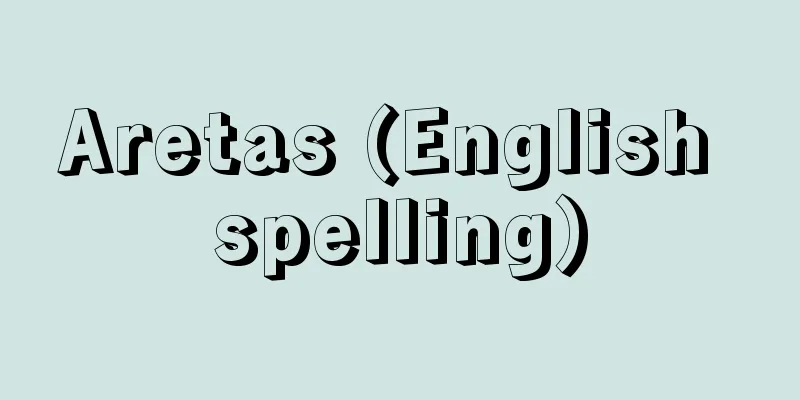Patrol boat

|
A vessel belonging to the Japan Coast Guard whose mission is security and rescue. Seaworthy vessels that operate on the high seas are called patrol vessels, while those that operate around bases such as within ports are called patrol boats. The mission of patrol vessels is to ensure safety and security at sea. These include (1) enforcing laws and regulations at sea, (2) rescue from accidents at sea, (3) preventing marine pollution, (4) preventing and suppressing crimes at sea, (5) investigating and arresting criminals at sea, and (6) ensuring the safety of maritime traffic. Because they are engaged in patrolling the long coastline of Japan, providing rescue in rough weather, and protecting fishing boats operating on the high seas, they have excellent speed, stability, and seaworthiness despite their small hulls. For this reason, the hull is slender, the center of gravity is low, and the surface area exposed to the wind is reduced, making it similar to military vessels, but the difference is that the Ship Safety Act applies to the structure, rigging, and equipment of the hull. They are equipped with advanced navigational instruments, radio equipment, rescue towing equipment, mooring line launching equipment, and guns and machine guns for security purposes. Since the hull is relatively small and requires high speed, the main engine is a lightweight, small diesel engine, and the principle is a twin-engine, twin-shaft system with two main engines and two propellers. The 2,000-ton patrol vessels "Izu" and "Miura", built from 1967 to the following year, were the largest patrol vessels at the time, but in 1978, the "Souya" (3,137 gross tons), the first patrol vessel capable of carrying a helicopter, was built, and the number of vessels of the same type was gradually increased. [Morita Tomoharu] Subsequently, in response to the international demand for ensuring maritime safety, an even faster and larger patrol ship, the Mizuho (5,259 gross tons), was built in 1983 to develop a wide-area patrol system. This large patrol ship was equipped with two helicopters and was designed to allow for the rescue of Japanese nationals overseas. In 1991 (Heisei 3), the large patrol ship Erimo (1,268 gross tons), with enhanced rescue capabilities that placed emphasis on cooperation with helicopters, was built, and by 2000 a total of seven ships of the same type had been built. In 1992, the Shikishima (7,175 gross tons), capable of traveling between Japan and France without stopping at ports, was completed to escort the transport of reprocessed plutonium, becoming one of the largest patrol ships in the world. In addition, two patrol vessels of the same name were completed in 1997 and 1998 as successors to the aforementioned Izu and Miura. Both vessels were in the 3,000 gross tons range and were built as disaster response vessels in the wake of the Great Hanshin-Awaji Earthquake, and will serve as response headquarters in the event of a disaster. In March 1999, a suspicious ship thought to be a North Korean spy ship was discovered off the coast of the Noto Peninsula, but it escaped despite an order to stop, and in December 2001 a gunfight broke out between a similar suspicious ship and a patrol boat. To deal with such situations, efforts were made to strengthen the armament of patrol boats and make them faster. The high-speed patrol boat Aso (770 gross tons), which uses water jets for its propulsion system and boasts a speed of over 30 knots, was completed in 2005, and Hida (1,800 gross tons) in 2006. Furthermore, in 2008, the latest patrol boat Hateruma (1,300 gross tons), which constantly patrols the Senkaku Islands, was completed. As of May 2008, the Japan Coast Guard had approximately 440 patrol vessels, including 13 large helicopter-equipped patrol vessels and 38 large patrol vessels, deployed to the 1st through 11th Regional Coast Guard Headquarters. [Editorial Department] [References] | |Source: Shogakukan Encyclopedia Nipponica About Encyclopedia Nipponica Information | Legend |
|
海上保安庁所属の船舶のうち警備救難を任務とする船。外洋で行動する航洋性のあるものを巡視船、港内など基地周辺での行動を目的とするものを巡視艇という。巡視船艇の任務は海上での安全と治安の確保である。(1)海上における法令の励行、(2)海難の救助、(3)海洋における汚染の防止、(4)海上における犯罪の予防および鎮圧、(5)海上における犯人の捜査および逮捕、(6)海上における船舶交通の安全確保、などが含まれる。海岸線の長い日本沿岸の哨戒(しょうかい)、荒天時の救難、公海で操業する漁船の保護などに従事するので、小さい船体のわりに速力、安定性、耐航性が優れている。このために、船体がやせ型で、重心が低く、側面から風の当たる面積を少なくするなど設計上配慮され、軍事用の艦艇と似た船型であるが、船体の構造や艤装(ぎそう)、設備に船舶安全法が適用される点が異なっている。高度の航海計器、無線設備を備え、救難用の引き船装置、もやい索発射装置などをもち、警備のため砲や機銃を装備している。船体が比較的小さく高速が要求されるので、主機関は軽量・小型のディーゼル機関とし、主機関とプロペラをそれぞれ2基備えた二基二軸方式を原則としている。1967年(昭和42)から翌年にかけて建造された2000トン型巡視船「いず」、「みうら」は、当時最大の巡視船であったが、78年にはヘリコプター搭載可能な初めての巡視船である「そうや」(3137総トン)が建造され、順次同型船が増強された。 [森田知治] その後、国際的に海上安全の確保が求められ、広域哨戒体制の整備のために、さらに高速で大型の巡視船「みずほ」(5259総トン)が1983年に建造された。これにはヘリコプターが2機搭載されており、海外にいる日本人の救出も考慮した大型巡視船である。1991年(平成3)には、ヘリコプターとの連係を重視した救難強化型の大型巡視船「えりも」(1268総トン)が建造され、さらに、同型船が2000年までに計7隻つくられている。1992年、再処理済みプルトニウム輸送を護衛するため、日本とフランスの間を無寄港で往復する性能をもつ「しきしま」(7175総トン)が完成、世界最大級の巡視船となった。また、前述の「いず」、「みうら」の後継として同名の巡視船が1997年と翌98年に完成、ともに3000総トン台で、阪神・淡路大震災をきっかけに災害対応型としてつくられたもので、災害時には対策本部の役目を担う。 1999年3月に能登(のと)半島沖で北朝鮮の工作船とみられる不審船を発見したが、停船命令にもかかわらず逃走される事件が発生、2001年12月には同じような不審船と巡視船の間で銃撃戦が展開された。このような事態に対処するため、巡視船の武装強化と高速化が図られるようになった。推進装置にウォータージェットを採用し、30ノット以上の速力を誇る高速巡視船「あそ」(770総トン)が2005年に、「ひだ」(1800総トン)が2006年に完成した。さらに2008年には、尖閣(せんかく)諸島を常時パトロールする最新型の巡視船「はてるま」(1300総トン)が完成している。2008年5月現在、海上保安庁に所属する巡視船艇は、ヘリコプター搭載大型巡視船13隻、大型巡視船38隻など約440隻で、第一から第十一管区のそれぞれの海上保安部に配備されている。 [編集部] [参照項目] | |出典 小学館 日本大百科全書(ニッポニカ)日本大百科全書(ニッポニカ)について 情報 | 凡例 |
<<: Pilgrimage - Junshu (English spelling) xun-shou; hsün-shou
>>: Junshi - Death by martyrdom
Recommend
Iwajima
An island belonging to Kami Amakusa City, Kumamot...
Indian National Trade Union Congress
…[Yamaguchi Hirokazu]. … *Some of the terminology...
Dungeness crab - Ginkgo crab
This crab belongs to the family Dungeness, order ...
Incunabula (English spelling)
The Latin word means "diaper," "bir...
Gyokuhoin Temple
One of the sub-temples of Myoshinji Temple in Hana...
Complete transposition of the great arteries
…They are classified from various perspectives, b...
Indirect heating - Indirect heating
...to heat a room. There are individual heating, ...
Mariinskaya vodnaya sistema (English notation) Mariinskaya vodnaya sistema
…the Mariinskaya Waterway is an inland waterway i...
Plagiochila ovalifolia (English spelling) Plagiochila ovalifolia
… [Kitagawa Takashi]. … *Some of the terminology ...
Observation airplane
A military aircraft whose missions include reconna...
Horror novel - Kyofushosetsu
〘 noun 〙 A novel that depicts a frightening event....
Weng Tong-he (English: Weng Tong-ho)
[Born] Daoguang 10 (1830) [Died] Guangxu 30 (1904)...
Liquid phase absorption reduction method
… [Wet denitrification technology] Most of the we...
Morihisa
Noh piece. Fourth piece. Five-school current piec...
Maria Cristina de Borbón
1806‐78 Queen of Spain, Ferdinand VII. Daughter of...









